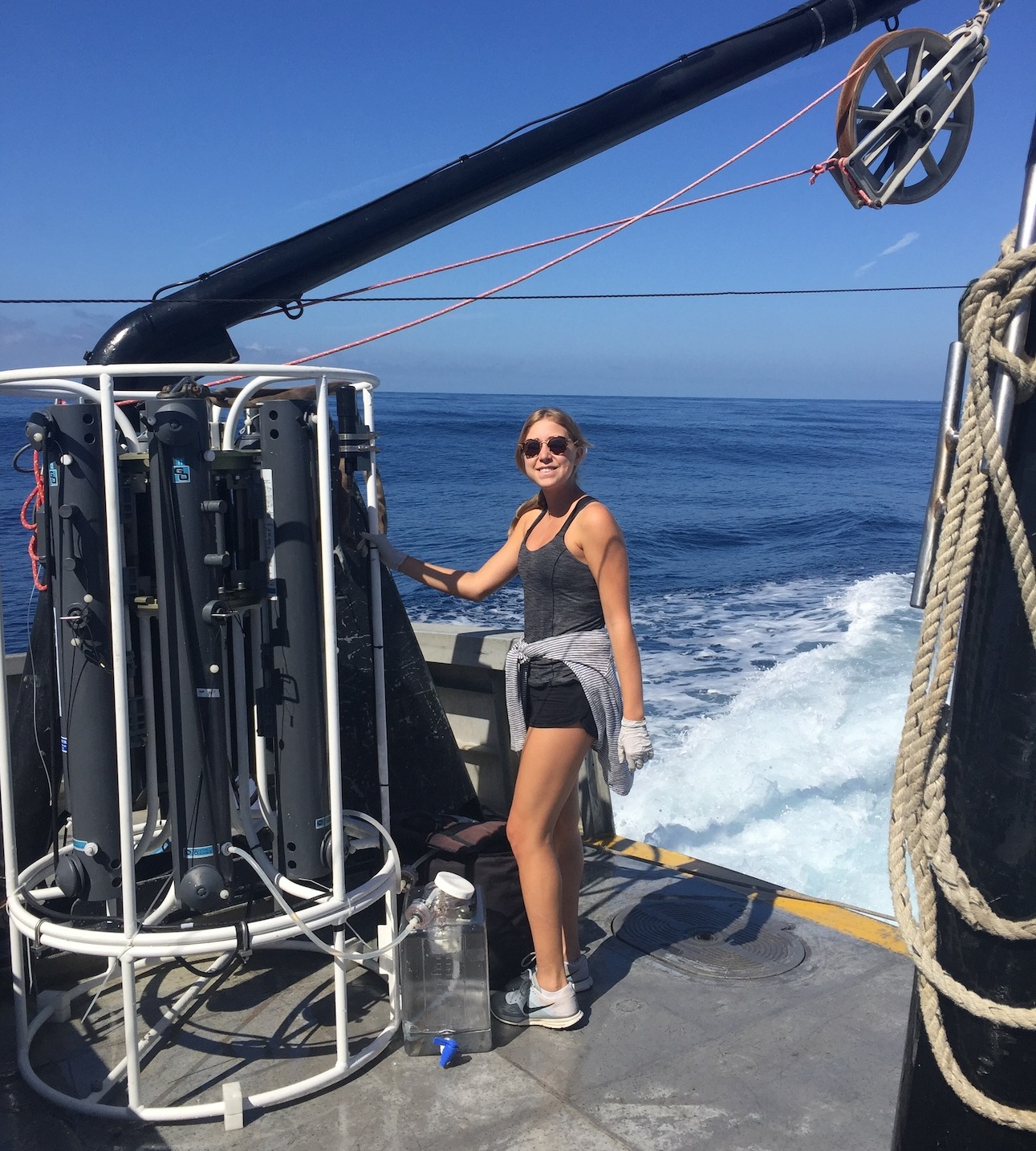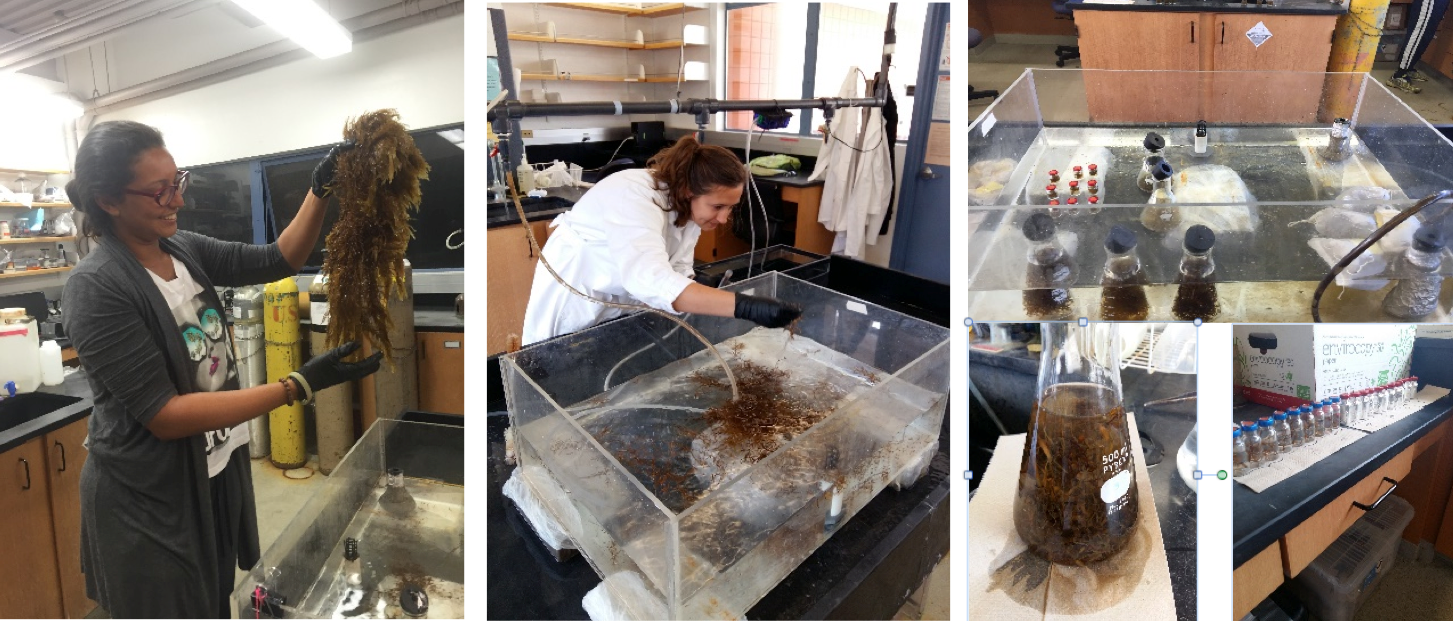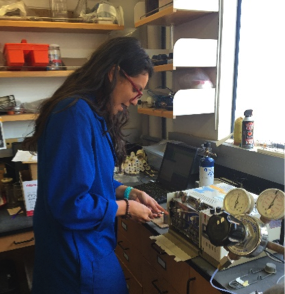By: Nikki Egna
As a Wrigley Institute Intern this fall, I am assisting in the analysis and processing of their San Pedro Ocean Timeseries (SPOT) research. SPOT is a set of 10 years of data collected from 10 miles off the Southern California shore. We analyze aspects such as nutrients, salinity, temperature, nitrates, and fluorescence at this location up to a depth of 500 m over the course of three months. We analyze this data to see how these factors change with depth and season. So far, we have been playing around with different computer programs such as Sea Bird Electronics (SBE) and R studio. It is great to be able to familiarize myself with these programs because they have many real world applications. I have also loved working with my fellow intern Ignatious because it allows us to take on all tasks as a team. We work off of each other and progress twice as fast when we have two brains on the task.
I was so fortunate to have been able to accompany the SPOT team on their October 2016 cruise. We left USC at around 6:15AM in order to make it to the docks by 6:45AM. We helped load all the equipment onto the boat and then took off on the 90 minute trip out. Once we arrived, everyone immediately got to work. It was exciting and pretty hectic. Each lab group knew exactly what they needed to do, and had to work quickly and efficiently in order to maximize time. Everyone on the cruise was so helpful and taught us so much. We learned all about the CTD device that is used to sample the water. Unfortunately, the automated machine was broken so we had to do it by hand. But it turned out to not be such a bad thing in the end because we were able to gain a greater appreciation for how oceanographic data used to be collected. I think that was our greatest take away from the cruise. We spent 9 hours on the boat just collecting the data for one month of one of the years of this study. It is just one little data point on a graph. And that 9 hours doesn’t even include the amount of time it takes to process and analyze the samples. Another essential lesson we learned is that dramamine is a must!!!
On top of participating in the cruise, we were able to process lab samples. My task involved organizing over 300 test tubes and putting 5mL of acetone into each of them. While some of you may think this is mundane and boring, I actually found it quite enjoyable. Doing the same task over and over again until completion is strangely therapeutic. It really gave me a good look into what a life of research would look like. The lab director Troy really appreciated our help, and it felt so rewarding to be able to contribute to something meaningful and be useful! Research is a potential field that I would like to go into after I graduate, so I am very excited to gain this real-life experience. Overall, I am extremely happy with my internship and am looking forward to seeing what the remainder of the semester holds!
Nikki is a Fall 2016 SPOT Intern with the Wrigley Institute, and a senior at USC majoring in Environmental Studies.





